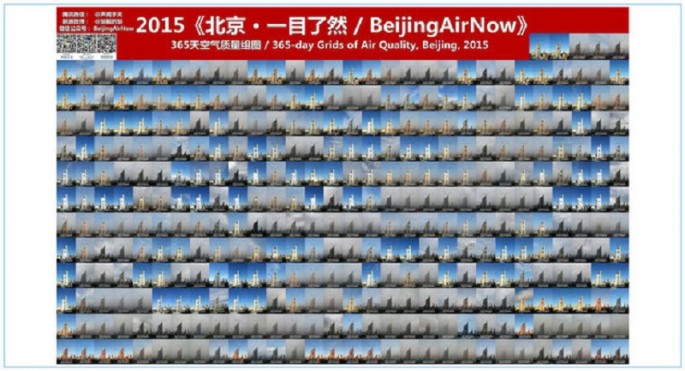A Beijing resident kept record of the city's pollution from his flat by taking a photo of the smog-filled skyline every day for three years.
The result is a time lapse covering 1,084 days which he then compiled into a nine-foot long poster that 55-year-old Zou Yi unfurled. He took the images using an old Samsung phone from the same vantage point from his living room window, reports Huffington Post.
To be fair to the municipal government, Beijing was not all-smog. There were days when the sky was clear and blue that allowed him to take a good shot of a nearby tower. However, on hazy days, the skyscraper is almost invisible.
After Zou posted the images on Weibo, Twitter's equivalent in China, the time line photos got more than 24 million hits, making it viral. The title of his project is "yi u liao ran" or "to see is to know." But he also gave it a more formal English name, BeijingAirNow.
He says the photographs would give a clear picture of air pollution in the capital city amid conflicting data from the U.S. embassy and Chinese agencies. The U.S. embassy in Beijing began publishing in 2008 real-time air quality readings of PM2.5 particles that the city recently tried to reduce by using water cannons to simulate the cleansing effect of rain.
China, however, criticized the data from the U.S. embassy as inaccurate and unlawful. But China eventually published its own pollution index, although its readings are observed to be rosier than the U.S. embassy's.
For Zou, his work is the best way he could express his sentiment about Beijing's air quality. "At first it was more of a way of complaining," he admits.
He continues, "Now I don't think I need to say anything. I'm looking to see if the government is working on it, if society is paying attention and participating, and if our air is really getting better."
In December, Beijing declared two red alerts which indicate air pollution worsens during winter. Pollutionsolution explains the rise in pollution level during the cold months to the increased use of coal for heating at homes and higher energy demands by industry.



























